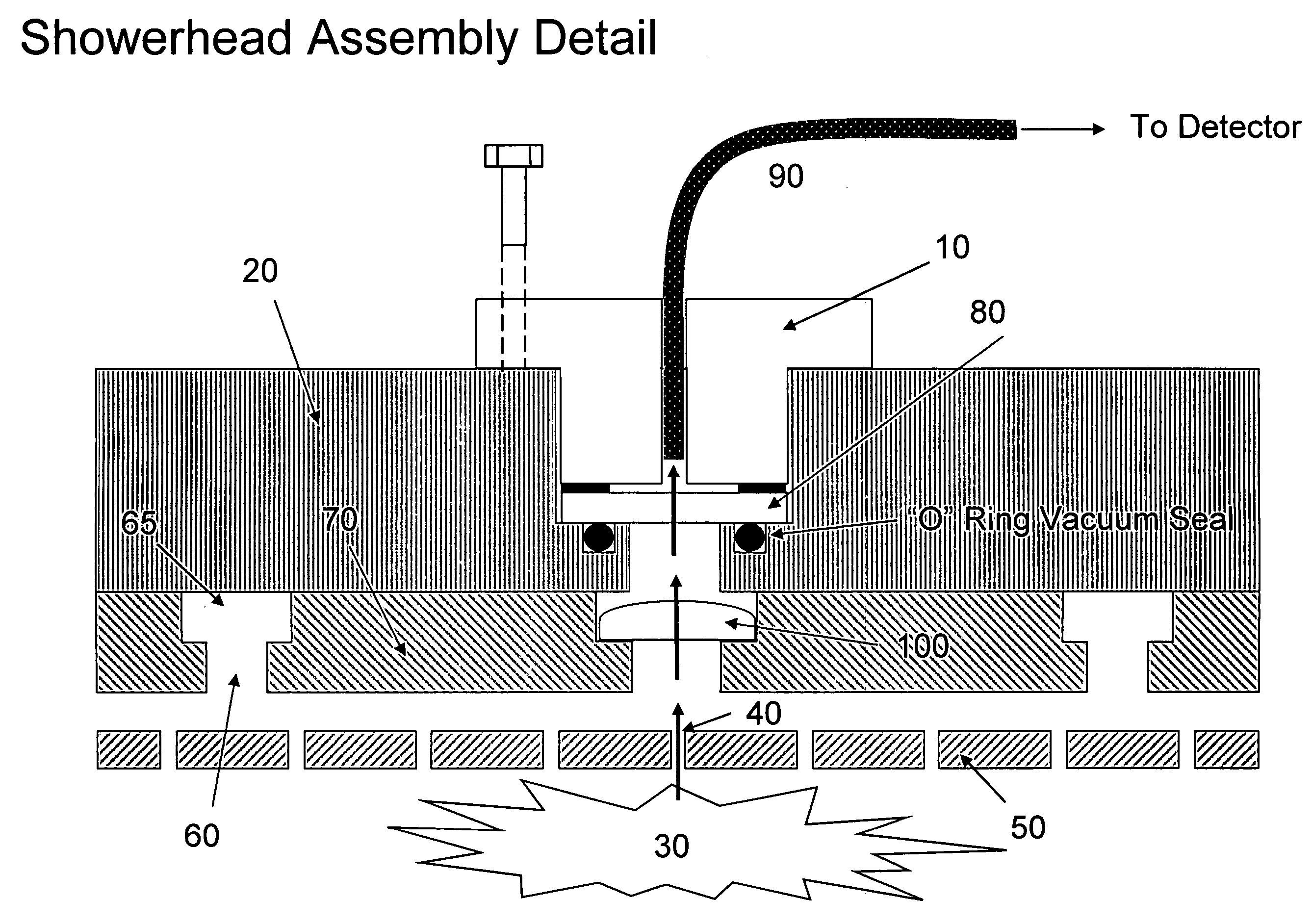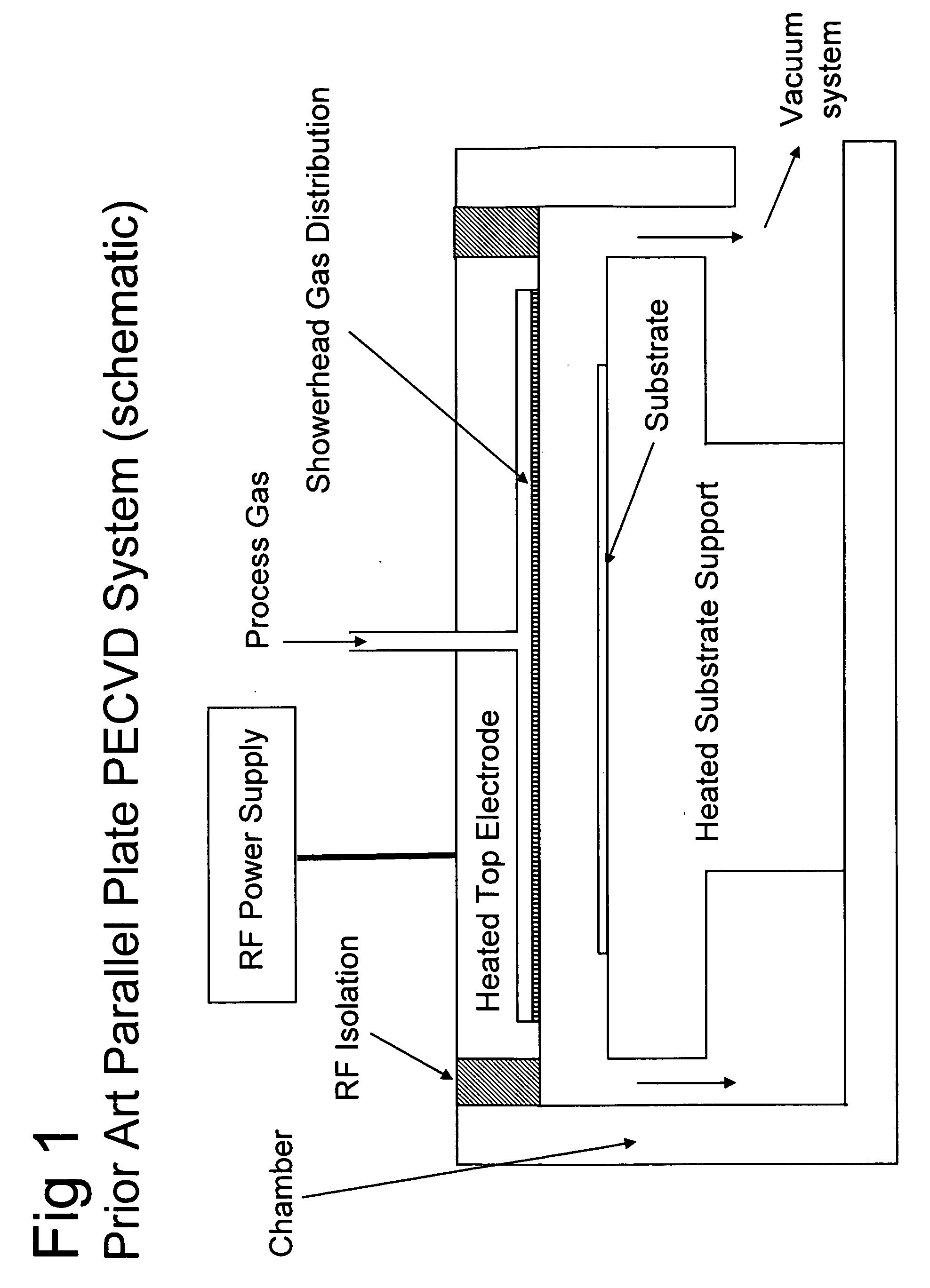Optical emission interferometry for PECVD using a gas injection hole
a technology of optical emission and gas injection hole, which is applied in the direction of chemical vapor deposition coating, instruments, coatings, etc., can solve the problems of inconvenient deposition process, inconvenient deposition process, and inability to determine the thickness of films, etc., and achieve the effect of improving the optical sensing of the plasma process
- Summary
- Abstract
- Description
- Claims
- Application Information
AI Technical Summary
Benefits of technology
Problems solved by technology
Method used
Image
Examples
examples
[0054] An accurate measurement of the film thickness in real time permits the process to be terminated when a pre-determined film thickness has been achieved. This is shown in FIG. 7 where the process is terminated when a target film thickness of 7500 Å has been achieved. The deposition rate of 498.8 Å / min was determined using a linear regression analysis.
[0055] The advantage of terminating the process based on this technique over the conventional method of terminating by time is that better run to run repeatability is obtained, resulting in devices with a more consistent performance. From run to run, the deposition rate will normally change slightly due to film accumulation, which will change the reactor characteristics. Terminating a process at a fixed time inevitably results in a film thickness which also changes from run to run. Additionally, it is necessary to clean a system periodically to remove the accumulated film using a plasma clean process. After this procedure, it is u...
PUM
| Property | Measurement | Unit |
|---|---|---|
| Nanoscale particle size | aaaaa | aaaaa |
| Wavelength | aaaaa | aaaaa |
| Wavelength | aaaaa | aaaaa |
Abstract
Description
Claims
Application Information
 Login to View More
Login to View More - R&D
- Intellectual Property
- Life Sciences
- Materials
- Tech Scout
- Unparalleled Data Quality
- Higher Quality Content
- 60% Fewer Hallucinations
Browse by: Latest US Patents, China's latest patents, Technical Efficacy Thesaurus, Application Domain, Technology Topic, Popular Technical Reports.
© 2025 PatSnap. All rights reserved.Legal|Privacy policy|Modern Slavery Act Transparency Statement|Sitemap|About US| Contact US: help@patsnap.com



